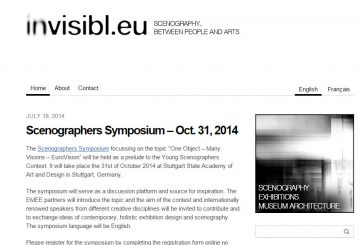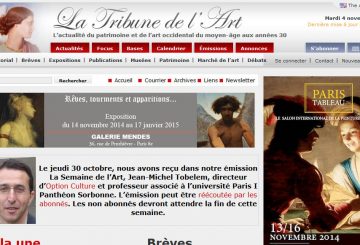 Voici un article vraiment intéressant de Francesca Perry sur la question de l’évolution des villes et du concept même de ville.
Voici un article vraiment intéressant de Francesca Perry sur la question de l’évolution des villes et du concept même de ville.
Pour vous donner un avant-goût de son article, voici quelques illustrations des exemples qu’elle donne :
1. Le phénomène Pokémon Go
« In ArchDaily, Patrick Lynch agrees the game gives users a heightened appreciation both for public space and the architectural and historical landmarks in their city. Apparently, so many players have flocked to the National Mall in Washington DC that the National Park Service has encouraged
rangers to help people find Pokémon, and learn about historical monuments in the process.
What makes a Pokémon space successful, Lynch suggests, is what makes any public space successful: easily accessible, open, with comfortable seating. “But unlike traditional plazas, whose development is often dictated by historical or economic motives,” he writes, “the success of a Pokémon space is entirely democratic.” Lynch points out the technology gives us a way of mapping how many people are using public places and for how long – and as a result, could allow us to interrogate the design of public space in real life. »

21st Century Nolli: How Pokemon GO and Augmented Reality Could Shape Our Cities
© Jesper Mühlback Hansen

A Pokémon trainer captures a water-based ‘Staryu’ in its natural habitat: near water. Image: Rana Abboud

Pokémon Go players walk along Market Street on Wednesday in San Francisco. Photograph: Marcio Jose Sanchez/AP
A ceci, je voudrais rajouter 3 observations :
- 1. Le jeu urbain (ou pervasive game ou Location-based game) n’est vraiment pas quelque chose de nouveau. Cela existe depuis près de near 30 ans. Il y a des centaines et des centaines de jeux/applications mobiles/sites web qui ont déjà été développés et utilisés (et qui le sont même toujours !). À vrai dire, même Niantic, l’entreprise derrière Pokémon Go, n’est pas nouvelle ! Mais il semble que la réelle nouveauté est que, si les précédents location-based games s’adressaient à des profils spécifiques de joueurs, Pokémon Go a réussi à intéresser un public plus large.
- 2. Ce changement d’échelle (depuis des groupes de joueurs relativement confidentiels au mainstream) représente un impact plus important de l’utilisation de l’espace public lui-même (et parfois personnel) mais également une nouvelle manière de considérer le location-based gaming. Ce n’est plus un truc de « geeks », c’est in et cool. Cela signifie donc une couverture médiatique plus importante mais également plus d’offres par les entreprises, les administrations, municipalités, les institutions culturelles (et ce phénomène est largement étudié par les universités et thésards (voir ici et là)). Ce qui est nouveau donc, et représente une véritable nouveauté, c’est l’engagement massif de troisièmes parties.
- 3. Cela signifie donc qu’il y a sans nul doute, de nombreuses possibilités pour repenser l’espace public, l’urbanisme et la manière de considérer les habitants et travailleurs comme des « utilisateurs » de la ville et des espaces publics et plus seulement comme des porte-monnaie sur pattes/potentiels terroristes/électeurs/individus* (*choisissez). MAIS, ceci ne sera réellement possible que SI ce mouvement est bien compris et transformé. En effet, on peut rétorquer à cette envolée optimiste que les utilisateurs de Pokémon Go sont fixés à leurs écrans et que rien autour n’a réellement d’importance, qu’ils soient dehors ou dedans, cela représenterait sensiblement la même chose puisque seul compte ce que leurs écrans/interface Pokémon Go leurs montrent. C’est bien pour cela que l’évolution est nécessaire et le déplacement de contexte est important (même s’il représente un sacré défi !) : amener les gens à s’intéresser en dehors de leurs écrans. En gros, les amener à être des utilisateurs DE l’espace public et pas seulement DANS l’espace.
La place de la photographie dans les espaces publics
« Residents and visitors alike flocked to Brighton beach this week during the UK’s novelty heatwave, but how much did the scene differ to 110 years ago? Flashbak has published a brilliant set of colour photographs taken on Brighton beach in 1906 by Otto Pfenninger, who created his own camera (formed of three colour-separated plates) to capture a full-colour image in a single exposure. The beach itself may not look very different, but the formal suits and long skirts might look a little out of place among today’s sunbathers. »




Projet-pilote vs réalité
« As Suzanne Goldenberg reported earlier this year, Masdar City – the UAE development originally conceived in 2006 as the world’s first “zero carbon city” – has become something of a green ghost town, with initial goals scrapped and the completion date pushed back from this year to 2030. Nevertheless, there are some that live and work in this bizarre and empty place: French photographer Etienne Malapert, whose work is published in Tech Insider, visited the city and captured the strange landscapes, striking architecture and rare residents. “I was very surprised by the emptiness in Masdar,” Malapert says. “One could almost speak of a dead, ghostly city.” »


« The high-rises are angled to provide the most possible shade to each other and the city’s streets. » Photo by Etienne Malapert

« For now however the self sufficient city of the future remains a half built ghost town ». Photo by Malapert
Métros déserts
« As CityLab reports, urbanist and self-professed “data junkie” Chris Whong has created a new map of New York’s subway deserts – or, the areas in the city where it takes longer than 10 minutes to walk to a subway stop (much of Brooklyn, in particular). The map shows imaginary suggested subway lines to serve these areas. »


Subway Deserts by Chris Whong
Une ville (aussi) pour ses habitants
« A revised draft of Mumbai’s 2014-2034 Development Plan is open for the city’s residents to comment on until the end of July. As Darryl D’Monte writes in Scroll, one welcome thing to appear in the plan is the aspiration to create 1 million affordable homes in the city.
But D’Monte questions where, and how, this new housing will be built. Much of the land allocated for the purpose is currently part of no-development zones that were supposed to be protected – or otherwise only developed in ways that promote tourism, which affordable housing does not. Without proper planning, Mumbai’s ambitious affordable housing aspiration may, as architect-activist PK Das suggests, remain somewhat pie in the sky. »

A slum surrounds a noll known to locals as ‘Hill 3’ in Mumbai’s northern slums. Photograph: Amos Chapple
Un espace pour tous à Cleveland
« Cleveland’s Public Square, a long-contested space in the heart of the city, has been transformed by the High Line’s landscape architect as part of a “renaissance” of the downtown district. Colin Woodard, writing in Politico, looks at the history of the Public Square and its recent “democratic” transformation. Situated close to this week’s Republican National Convention, the space has become a hub for public protests. Photographs in the New Yorker capture a Black Lives Matter protest which happened on Tuesday. »

A bird’s-eye view of Cleveland’s Public Square park today. | Jabin Botsford/The Washington Post via Getty Images | Getty Images

Cleveland, Ohio – A protestor sits with his hands up in front of police officers during a protest in Cleveland Public Square during the 2016 Republican National Convention. Tuesday, July 19, 2016.
CREDIT: Philip Montgomery for The New Yorker







Vous devez être connecté pour poster un commentaire.